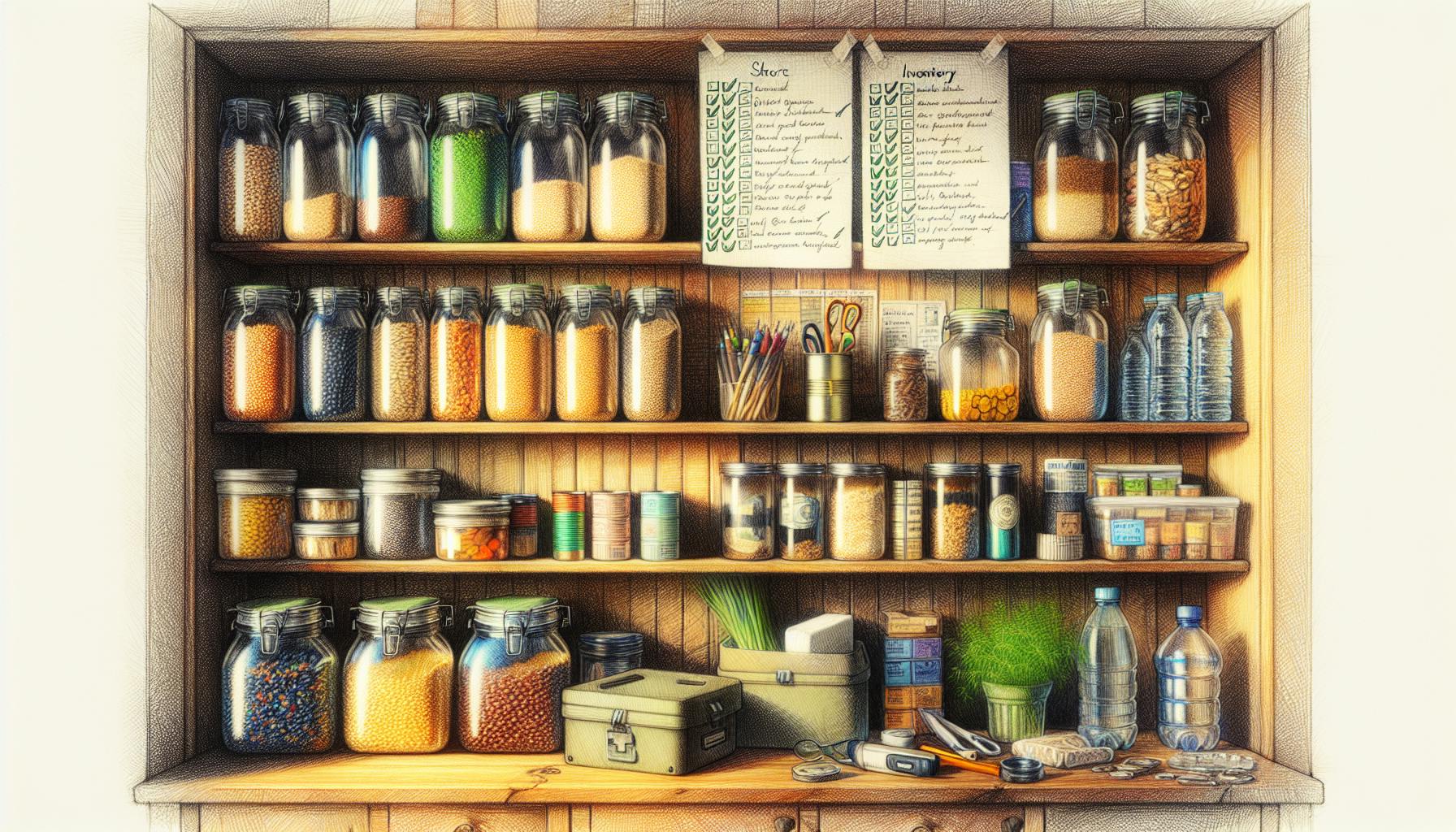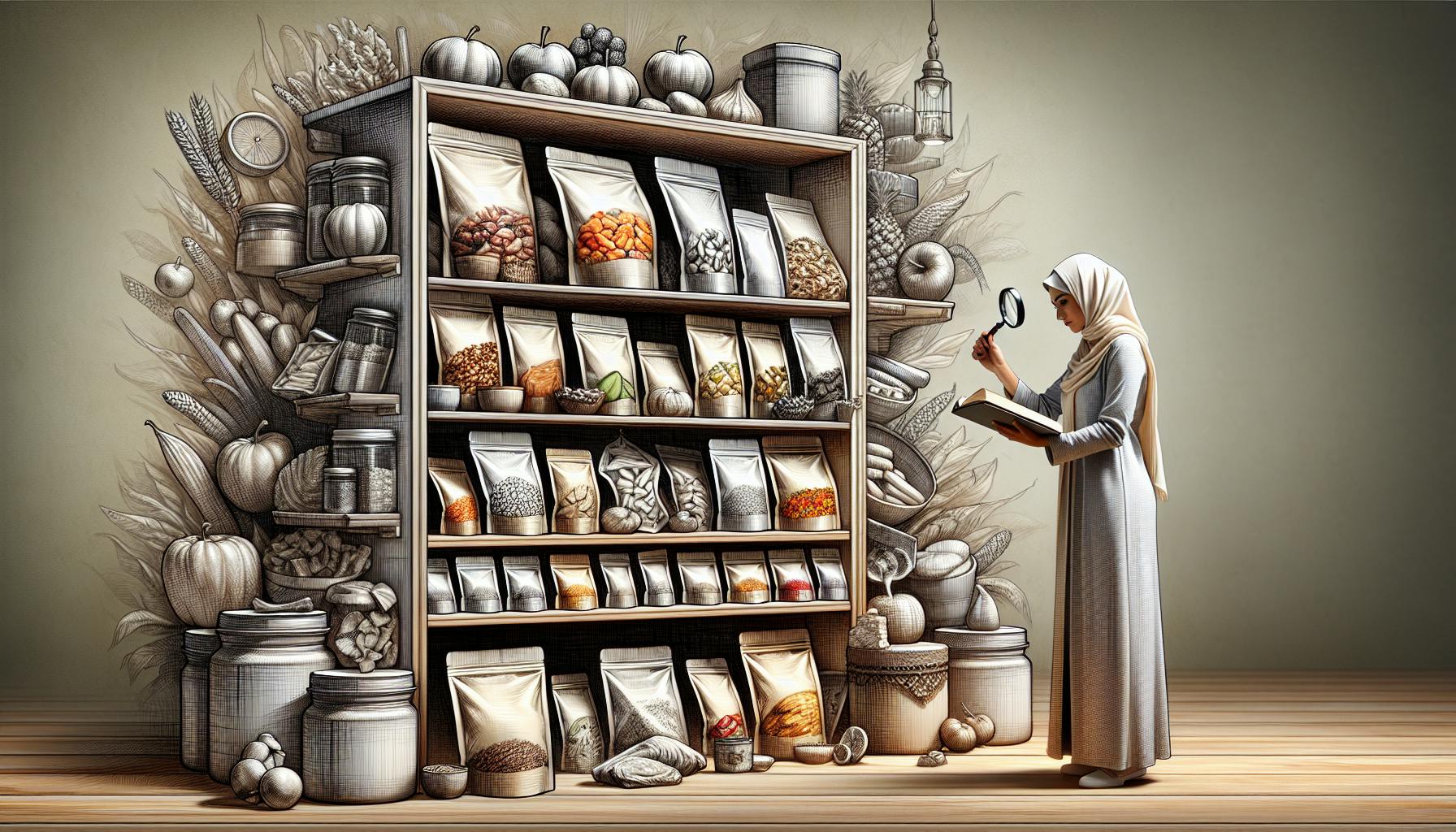Having a stockpile of canned meats is crucial for emergency preparedness, but improper storage can lead to wasted resources and compromised health.
By following research-backed guidelines on optimal temperature, humidity, lighting conditions, and inventory management, you can maximize the shelf life of your survival canned meats.
In this comprehensive guide, you'll learn specific best practices for tailored storage solutions based on meat type, how to decipher expiration dates, indicators of spoilage to monitor, and alternative options like root cellars and food-grade buckets.Implementing these tips will equip you to store canned meats safely for years to come.
Introduction to Survival Fresh Canned Meat Storage
Properly storing survival canned meats is critical for emergency preparedness. Canned meats can have shelf lives of multiple years when stored correctly. This section will provide an overview of canned meat storage best practices to maximize shelf life.
Understanding the Importance of Shelf Life
Canned meats like Survival Cave Food or Keystone canned meat are designed to last for up to 25 years when unopened and stored properly. This exceptionally long shelf life makes them ideal for emergency food storage. Paying attention to storage conditions helps ensure canned meats remain safe and nutritious when you need them.
Setting the Stage for Storage Success
The key goals when storing canned survival meats are:
- Storing in a cool, dark place around 40-70°F
- Rotating stock using a first-in-first-out system
- Checking for signs of spoilage like rust, bulging cans, or foul odors
Following these basic guidelines will help maximize canned meat longevity for emergency preparedness.
Establishing Optimal Storage Conditions
Temperature Control for Longevity
Keeping survival fresh canned meats like Survival Cave Food and Keystone canned meat stored at the proper temperature is crucial for longevity. The ideal storage temperature range is 50-70°F. Temperatures below 50°F can cause cans to corrode faster, while temperatures above 70°F speed up spoilage. Storing at room temperature around 65°F allows the canned meat to last for years while maintaining quality. Focusing on temperature control is especially important when storing 25 year canned meat for long-term preparedness.
Lighting's Impact on Canned Meat Quality
It's best to store canned survival foods like Survival Cave Food in dark spaces away from light. Exposure to light can affect taste and degrade nutrients over an extended time. Find a cool, dark storage area like a basement, root cellar or interior closet. If those aren't options, at least store your canned goods in opaque plastic bins. Limiting light exposure will help Survival Frog Canned Meat retain optimum flavor and nutritional content for emergency use.
Humidity and Its Effects on Can Integrity
Keeping canned meats stored in the 40-60% relative humidity range helps prevent corrosion and rust over years of storage. High humidity above 60% can lead to can deterioration, compromising integrity of foods like Keystone canned meat. Monitor humidity levels in your storage area. Use dehumidifiers as needed during summer months when humidity is higher. Ensuring optimal humidity will help canned meats like Prepper all natural beef last their intended shelf lives. Proper humidity along with temperature and light control are key for canned meat preservation.
Strategic Inventory Management for Survival Meats
Implementing a FIFO System
Implementing a first-in, first-out (FIFO) rotation system is critical for managing your stock of survival canned meats like Survival Frog Canned Meat. This ensures that the oldest cans are used first, maximizing freshness and minimizing waste from expired products.
When restocking, place new cans behind existing inventory. Clearly label cases with purchase dates and contents using a permanent marker. When taking meat for use, select cans from the front of storage based on oldest purchase date. A well-organized FIFO system is essential for tracking shelf life and planning usage of long-term storable foods like Keystone canned meat.
Monitoring Expiration and Best-By Dates
Carefully monitoring expiration and best-by dates is key to effective inventory management of survival food items like 25 year canned meat. While some products have extensive shelf lives, it is still important to track dates and plan usage to optimize freshness and avoid last-minute discards.
Maintaining an up-to-date inventory list noting purchase dates, contents, and expiration info can help forecast usage and identify items for priority eating. For example, Survival Fresh Beef or other meats nearing best-by dates can be set aside for upcoming camping trips or designated as everyday use versus long-term emergency stock.
Regular checks of canned goods for any bulging, damage, or rust can also help gauge condition and usability beyond dates printed on labels.
Identifying Signs of Spoilage
It is important to periodically inspect survival canned meat inventory for any issues with container integrity or signs of spoilage. Look for bulging cans, which can indicate gas production and food spoilage from bacteria or fungi. Discard any swollen, dented, or leaking cans.
Also check ends and seams for corrosion, looseness, or sharp edges from damage that can impact shelf life. The All Natural Beef from Prepper or other survival meats should have no unpleasant odors. An off smell when opened likely signals spoilage, and the contents should not be consumed.
Following FIFO practices, checking expiration dates, and inspecting condition helps avoid wasting survival food supplies and ensures healthy, safe canned meat is on hand when you need it most.
sbb-itb-b932644
Exploring Alternative Storage Solutions
As preppers, having reliable long-term storage solutions for our food supplies is critical. However, ideal storage conditions aren't always guaranteed. It's important to have contingency plans in place.
Utilizing Root Cellars for Canned Meats
Root cellars provide natural cooler temperatures that can help preserve canned meats. Consider the following tips:
- Ensure the root cellar maintains temperatures between 40-60°F to prevent freezing or overheating of Survival Fresh Beef. Monitor conditions.
- Place cans on wooden shelves to avoid direct contact with dirt floors that may harbor mold.
- Check cans regularly for signs of rust or other damage that could compromise the 25 year canned meat.
Protecting Cans with Food-Grade Buckets
Sealed food-grade buckets can add an extra layer of protection from humidity, rodents, and other threats that could ruin Prepper all natural beef, such as:
- Line the clean, dry bucket with a new Mylar bag before placing canned meats inside.
- Optional: Add oxygen absorbers to the bag to help prevent oxidation.
- Seal the Mylar bag then securely lid the bucket.
- Store in cool, dark place and check periodically for damage.
Having solid back-up storage plans ensures we can keep our survival canned meats in optimal condition until needed in an emergency. Stay vigilant and think ahead.
Tailoring Storage Practices by Meat Type
Storing Survival Fresh Beef
When storing Survival Fresh Beef and other canned beef products, it's important to keep them in a cool, dark place like a basement or root cellar. The optimal storage temperature is between 50-70°F. Temperatures below freezing or above 80°F can negatively impact the quality and shelf life of canned meats over time. Check the seals and packaging regularly and watch for any bulges, rust, or leaks which can indicate spoilage. With proper storage, Survival Fresh Beef can last 5+ years. Rotate stock using the FIFO (first-in, first-out) method.
Preserving Canned Poultry
Canned poultry like chicken and turkey should be stored in a dry pantry away from light and heat sources. The shelf life depends on the processing method - products packed in broth tend to last around 2 years while those packed in water can keep for 5+ years. Regardless of processing, check cans every 6 months and watch for dents, rust, or seam defects. Poultry fat can turn rancid over time if exposed to oxygen or warmer temperatures above 75°F, so cool basement storage is best.
Optimal Conditions for Canned Pork
Spam, canned ham and other canned pork fare well stored at room temperature, unlike beef and poultry. The shelf life is enhanced by keeping canned pork between 50-70°F, out of direct sunlight in a basement or root cellar. While these products are shelf-stable for 2-5 years, high heat and humidity can still shorten shelf life. Check for swollen or leaking cans periodically. Storing spam or canned ham in the refrigerator after opening can extend freshness for up to a week.
Determining the Right Time to Consume Canned Meats
When it comes to long-term food storage, knowing when to consume canned meats is crucial for safety and preparedness.
Deciphering Best By Dates for Long-Term Storage
"Best by" dates on canned meats, especially products like 25 year canned meat, indicate quality rather than safety. The dates tell you when the flavor and texture start to degrade. As long as the can remains intact with no rust, bulges, or leaks, canned meat can safely be consumed for years beyond its best by date. However, be extra vigilant about signs of spoilage as time goes on.
Safety First: When to Discard Canned Meat
If you notice any bulges, rust, or leaks in a canned meat container, play it safe and discard it, even if it is within the best by period. Botulism and other foodborne illnesses are extremely dangerous. When dealing with long shelf-life items like 25 year canned meat especially, don't take risks with your health. Discard immediately at first signs of potential contamination or spoilage.
Prioritizing safety over saving food ensures you will have healthy emergency rations when you need them most. Conduct frequent checks of your canned meat supplies and separate or discard any questionable cans.
Conclusion: Summarizing Survival Canned Meat Storage Essentials
A proper storage solution is critical for ensuring your survival canned meats remain in optimal condition when you need them most. By following key best practices, you can extend the shelf life of products like survival fresh canned meat from Keystone and Survival Cave Food.
Recap of Storage Best Practices
-
Store cans in a cool, dark place between 50-70°F. Temperature fluctuations can impact shelf life.
-
Rotate stock using the FIFO (First In, First Out) method to use oldest cans first. Mark purchase dates clearly.
-
Inspect cans every 6-12 months for signs of swelling, leakage, rust, or dents. Discard any compromised cans.
-
Consider storing some cans in a root cellar or basement if temperature controlled storage isn't available.
Final Reflections on Preparedness
Proper storage brings peace of mind, knowing you have nutritious emergency food on hand when needed most. It also prevents waste from spoilage. Assessing and organizing your stock regularly is key. With some diligence, you can rely on survival canned meats like Survival Fresh Beef for nutrition during unexpected events.


